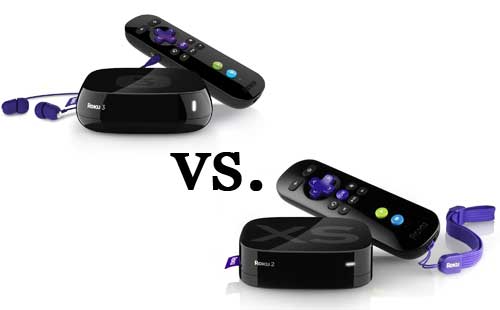But even if you have done some research on the devices that could meet your needs and decided to go with a Roku, you may be confused about which Roku model is the best for you. We have previously examined the differences between the Roku 2 XD and the Roku 3, but another tough choice lies in picking between the Roku 2 XS and the Roku 3. Both of these Roku models share a lot of similarities, but some of the more advanced features are exclusive to the Roku 3. However, the Roku 3 comes with a higher price tag than the Roku 2 XS, so you need to determine if you will make use of those additional features, and if they are worth the price increase. *Note that the one-stop search feature is not yet available on the Roku 2 XS, but will be available with a software update that is supposed to be coming out in Summer 2013.
Some Roku 3 Advantages
There are three key aspects of the Roku 3 that I find to be the main advantages that this model has over previous versions –
Faster processor, which means better performanceDual-band wireless capabilities that make it easier to connect to your wireless networkHeadphone jack on the remote control
I have been using Roku devices for several years now and, while I have always loved the features that they offer, my one biggest complaint would have to be the speed of the device, and the amount of time that it can take to navigate the menus and refresh the screen. While this is less of an issue with the Roku 2 models, you instantly feel how much faster the Roku 3 is after using previous models. You can read our Roku 3 review to see what we think about the performance improvements on the device. The dual-band wireless is more important for people who will be placing the Roku far away from their router. My Roku 3 is located on a different floor, on a different end of my home, and the wireless reception is still excellent, allowing me to stream in HD without any problems. But if your Roku is going to be close to your router, then this is less of an issue. The last important feature is a unique one. The Roku 3 remote control has a headphone jack, to which you can connect a pair of headphones. When the headphones are connected the TV volume will be muted, and the sound will play through the remote control. This is great if you are in a room with someone that wants a quiet environment, but you want to listen to your Roku.
Some Roku 2 XS Advantages
In matters of performance, the Roku 3 is clearly superior to the Roku 2 XS. But the Roku 3 has a retail price of $100, whereas the Roku 2 XS can typically be found for about $85. This is perhaps the largest reason why the choice is difficult. The Roku 2 XS is a great device, and people that are looking for something that they will not be using as their main entertainment source will be very happy with the purchase. The Roku 2 XS also has an AV (composite) connection in addition to an HDMI connection, whereas the Roku 3 only offers HDMI. If you are intending to connect the Roku to a television that does not have an HDMI port, then the Roku 2 XS would be a better choice in that situation. Aside from the performance, video output and headphone remote differences, these two devices are very similar. They can both be directly connected to USB drives, both have motion remote controls for gaming, and both can output 1080p content.
Conclusion
I recently had to make this decision myself, and I opted for the Roku 3. Having used both of these devices, I feel that the improved performance between the Roku 2 XS and the Roku 3 was worth the added price. The improved wireless performance and the headphone jack played a factor in the decision as well, but I was looking for a device that I could comfortably use for several years, and the newer model seemed like the best fit for me. After receiving his Bachelor’s and Master’s degrees in Computer Science he spent several years working in IT management for small businesses. However, he now works full time writing content online and creating websites. His main writing topics include iPhones, Microsoft Office, Google Apps, Android, and Photoshop, but he has also written about many other tech topics as well. Read his full bio here.



























